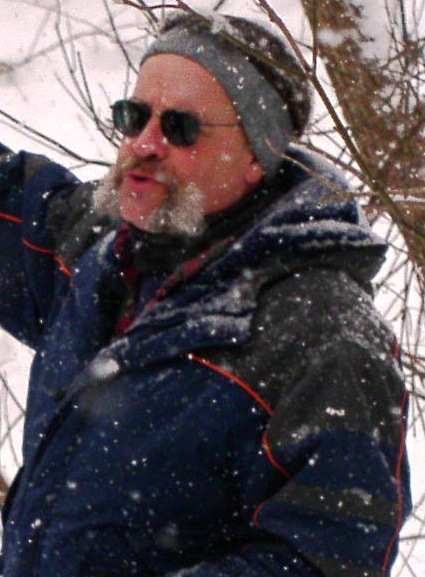Executive
Introduction - David L. Derrick
 Name:
David
Derrick
Telephone: 601-638-7717
Cellular: 601-218-7717
d_derrick@r2d-eng.com
Mr. Derrick graduated from Villanova University with a B. S. Civil
Engineering degree in 1978 and has been
employed continuously at the U.S. Army Corps of Engineers' Engineering Research and
Development Center since June of 1978. He currently holds the position
of Research Hydraulic Engineer in the Coastal and Hydraulics Lab
(CHL). In addition, since 1997 Mr. Derrick has held the
position of vice president with River Research and Design,
Inc. A true innovator, he specializes in
environmentally compatible, cost-effective approaches and methodologies
for design of river and streambank stabilization and riparian corridor
restoration projects; stream investigation and analysis using
principles of fluvial geomorphology; sediment transport analysis;
navigation channel improvement effects of river training structures;
innovative construction methodologies for stream stabilization works;
river and stream training structure inspection, monitoring, and
performance analysis; and physical movable-bed modeling.
David is a very hands-on practitioner and has been actively involved in
the development of innovative workshops (assessment, design,
construction, and bioengineering), innovative construction
methodologies, construction layout techniques, and inspection and
monitoring master plans and guidelines for stream and river restoration
projects. Mr. Derrick has also been involved in 7 dam removal
projects, karst topography (sinkhole) stream stabilization situations,
arid dry-wash restorations, and salmon and trout stream
restoration. He has practiced in most parts of the country,
and his knowledge and practical experience ranges from the Mississippi
River to the very smallest of streams.
He has been the principal investigator, or a team member, of research
work units investigating the effects of vegetative roughness and
developing repair and maintenance guidelines for all Corps
shallow-draft river training structures (over 10,000
structures).
Mr. Derrick has developed and refined the following cost-effective
streambank protection techniques: the Willow Curtain and
Willow Pole bioengineering methodologies; machine-placed and
minimal-stone (hand-placed) Bendway Weirs; tree trunk Bendway Weirs (5
variations); Traffic Control Stones, Thalweg Control Stones,
geotextile bag Bendway Weirs; two-stage Bendway Weirs; L and T-Head
Bendway Weirs; minimal Longitudinal Peaked Stone Toe Protection (LPSTP
at less than 1 ton/ft), LPSTP combined with rock vanes or plain, L or T
Head Bendway Weirs, and LPSTP combined with vegetated benches and spur
dikes for desert environments. Mr. Derrick has been
instrumental in pioneering the use of Bendway Weirs to redirect stream
flow to protect highway bridge abutments and pipeline
crossings. In most cases these projects have required a
combination of techniques Mr. Derrick has also used
Single-Stone Bendway Weirs successfully on three projects.
For grade control Mr. Derrick has championed 3 tree trunk
“Log Digger” Structures; Adjustable Engineered Rock
Riffles; Engineered Rock Riffles with all stones in compression,
Adjustable Random Native Boulder Engineered Grade Control Structures,
and Viffles.
For restoration/aquatic habitat improvement projects Mr. Derrick has
developed and refined the "Locked-Limb"; "Locked-Log"; "Locked-Log"
with footer logs; Fuzzy Locked Logs; “Half-Dense”
Riprap, “Smooshed” riprap, "Instant
Shade"; Extreme Instant Shade; "California" style LUNKERS;
“Corner LUNKERS”; ADA accessible fishing platform
“LUNKERS”; "Hydraulic Cover Stones" (5 types);
"Wiggle" shoreline deflectors; "Align & Catch" log revetment
pairings; “Squeezers”; “Missing
Tooth” Stone Transverse bars; "Dense Fibrous Root
Replication"; "Pushed Trees"; Missouri River Kickers &
“Kink” kickers for small streams; many types
of innovative fisherman access; vegetated, buried
(soil-choked), and curved keys; vine cover for exposed stone, Duck
Resting Rocks; and "Exclusionary Vegetation".
Mr. Derrick has also championed the following Abrupt Planform
Modifiers: Angle Slams, Grand Slams, Boil-Up Pools. Wrong-Way
Boil-Up Pools, & Twin-Spin Boil-Up Pools.
Most complex projects have involved many shareholders, including
landowners and conservation groups, as well as local, county, state and
federal agencies. In many cases Mr. Derrick acts as a
facilitator to combine the skill sets and experience of these diverse
assemblages of personnel, forming them into the required
interdisciplinary team.
He has conceptualized, but not yet built the following:
“California” style LUNKERS;
“wiggle” shoreline deflectors;
“fingerling escape channels”;
“low-elevation melt-away wooden pole retards; totally
removable bank protection; “stream-side shrubs”;
and sharp-nosed chevron flow concentrators.
Ongoing research centers on the practical application of many of the
aforementioned techniques, and analysis of soaking and planting of
eight species of adventitious rooting plants in six different
configurations during the non-dormant season.
In addition to his work in research and development, Mr.
Derrick is often called on as a technical consultant for complex
projects involving diverse shareholders, including landowners,
conservation groups, as well as local, county, state and federal agency
personnel. he often acts as a facilitator to identify and combine
shareholder’s skill sets and experience of this diverse
assemblage of personnel, forming them into the required effective,
interdisciplinary design team.
Each year Mr. Derrick develops and instructs in workshops and week-long
training courses on various subjects throughout the country for a
multitude of aquatic resource clients, both public and private,
reaching an audience of 500-900 people annually. Mr. Derrick is a
co-developer and co-instructor in the American Society of Civil
Engineers (ASCE) course “An Introduction to Stream
Investigation, Stabilization, and Restoration”. In
2006 Mr. Derrick started teaching hands-on workshops where a stream is
completely constructed during class and participants take part in
planting and other construction activities.
Selected projects and research are hereby presented. Many of
these technically complex projects involved multiple agencies and
required an interdisciplinary team approach. Mr. Derrick
collaborates both formally and informally with an extensive network of
regional, national, and internationally known experts. |
|